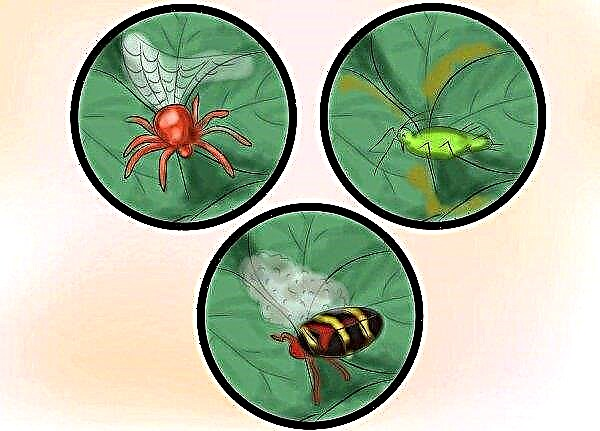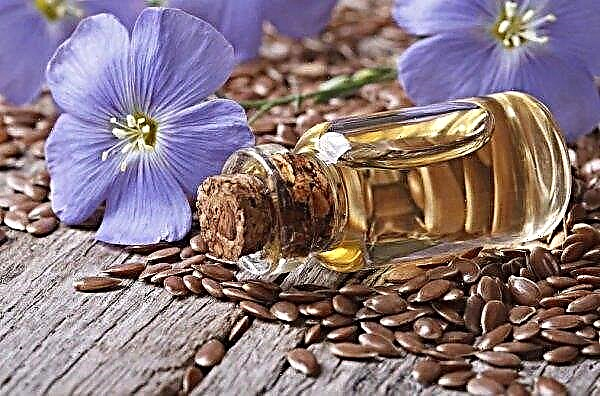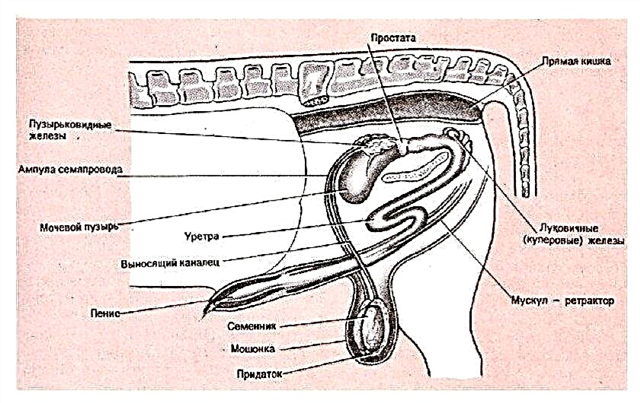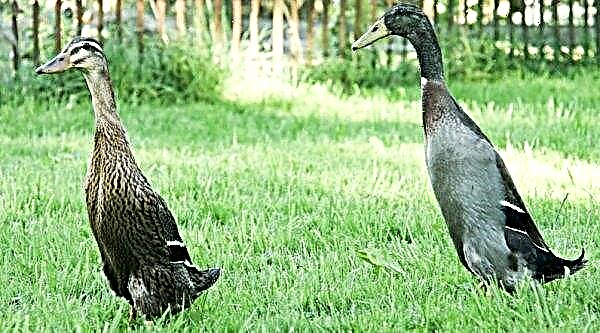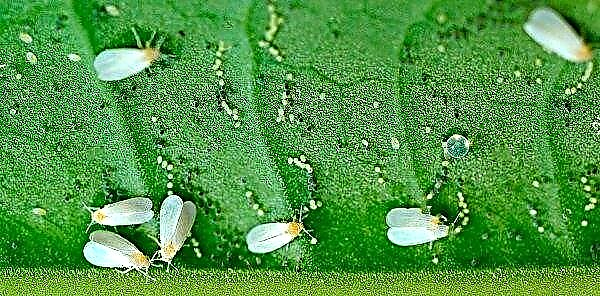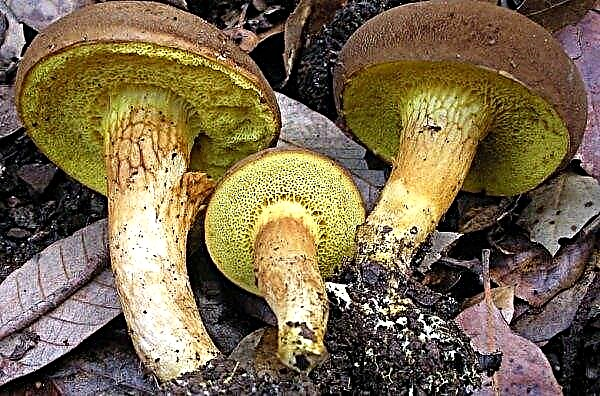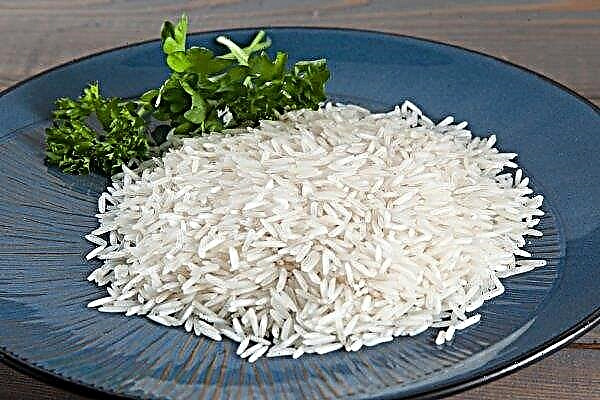Rhododendron is considered to be one of the most popular and beautiful flowering houseplants. For amateur gardeners, the second name of this beauty, azalea, is more familiar and understandable. Those who came across her will confirm that she is very willful and capricious. But if you learn to care for her, azalea will certainly thank you for your efforts with spectacular plentiful flowering, which will fill the house with special charm and comfort.
Plant description
The word "rhododendron" originates from Ancient Greece, and its literal translation means "rosewood." The most favorite among amateur gardeners is Indian azalea (many know it as Sims rhododendron) and Japanese (also known as blunt rhododendron). But florists, nevertheless, are closer to their liking Indian.
There are a huge number of varieties of rhododendron. Many are suitable for landscaping and gardening. Those plants that we used to see on balconies and window sills are not adapted to exist in the natural environment. These are hybrids obtained by breeders from other species of azalea. All of them differ in bush height, crown shape, type and color of flowers, timing and duration of flowering, but each of them is beautiful and worthy of attention in its own way.
This plant can be described as a highly branched, mid-layer. New shoots are abundantly covered with gray or brown hairs. Leaves - lanceolate, with a pubescent (especially in the lower part) surface. Inflorescences are formed from 2-6 buds. Flowering begins in winter or early spring (depending on the variety).
Important! All parts of this plant (all varieties) are very poisonous, so inAll manipulations on transplantation, pruning, etc. are recommended to be performed with gloves and to prevent rhododendron juice from getting on the mucous membranes. In addition, be sure to choose a place for the flowerpot, where it will be inaccessible to kids and pets.
For all varieties of indoor rhododendrons (and there are already more than 600), the following features are characteristic:
- evergreen shrubs reaching a height of 0.1 to 1.5 m;
- foliage differs in shape and length, but all are arranged in a spiral;
- bisexual flowers are collected in racemose inflorescences, single flowering is very rare;
- the fruit is a box.
Video: Varieties and types of rhododendron
Boarding or transplanting after purchase
Often indoor rhododendron is bought or given during its first flowering. And here the opinions of gardeners differ. Some are sure that you need to transplant immediately after purchase. This is due to the fact that the plant in stores is contained in transportation soil, which is excessively treated with synthetic fertilizers to stimulate intensive flowering and preserve the presentation for longer. The second ones are sure that it is not worth planting this bush in a new pot during the flowering period - the plant may die.
If you are closer to the second approach, it is recommended to transplant it when all the buds have flowered. Since azalea is a very picky pot flower, it is worth approaching this process with all care and responsibility, because a lot depends on which pot and substrate it will be planted in.If the first transplant was successful, and the plant began to grow actively, its timely planting in a new flowerpot will be a prerequisite for its further successful vegetation and flowering. The first three years, this is required every year, and then every two years.
Pot selection
When choosing a container in which azalea will be planted, it should be remembered that these plants are characterized by a superficial type of root system. Based on this, deep and large pots are categorically not suitable for her. It is recommended to opt for wide and low containers resembling a salad bowl or a plate for first courses.
Soil composition
Experienced gardeners recommend growing this potted plant in purchased soil (it is very easy to find on sale). It prefers acid soil that is unusual for indoor flowers. (whose pH is at a level not exceeding 4.5–5.0). To maintain acidity at the required level, once a couple of months you need to water the bush with either a solution of aspirin (at a dosage of 1 tablet per 1 cup of standing water), or a 0.2% solution of citric acid.

In addition, the substrate for azaleas should preferably be:
- nutritious;
- fibrous;
- loose;
- with excellent aeration.
In many stores it will not be difficult to find a substrate, the composition of which is selected taking into account the needs of azaleas, or clean heather land (in most cases, this is the same thing). If it is not possible to purchase a ready-made special substrate, or you prefer to prepare the soil for indoor plants with your own hands, mix in a proportion of 6: 3: 1 the following components:
- coniferous land;
- peat crumb;
- coarse river sand.

Step-by-step process
In order to properly transplant azalea, it is recommended that you follow the sequence described below:
- Gently remove the bush from the pot. This task will be performed much easier if half an hour before the start to water the plant well.
- Disinfect a sharp knife, and cut with it no more than 1.5–2 cm of fringe located at the bottom of an earthen coma. In addition, you can slightly fluff up the root system by making small cuts on the sides.
- Pour drainage into the bottom of the pot into which the azalea will be planted. The minimum layer is 3 cm. Expanded clay is considered to be the optimal drainage material, but other options will do (even small polystyrene foam sticks will do).
- Sprinkle the drainage layer with a small amount (about 3 cm) of substrate.
- Place the plant in a new container and cover it with earth to the top.
- Shake the pot gently several times to distribute the soil more evenly.
- Pour transplanted rhododendron generously. This is best done by immersion - put the pot for about an hour in a large container filled with room temperature water.
- Drain excess water.
- Place the pot in a pot with a large diameter, and fill the resulting space with moistened sphagnum or coconut fiber. Keep this layer always wet.
- Azalea is characterized by a gradual exposure of the roots. To avoid drying out, the substrate should be mulched 2-3 times a year. Materials such as peat chips, sawdust, needles or wood shavings are perfect for this.

Conditions for growing in an apartment
Indoor rhododendron is a plant with a rather capricious “character”. Care should be taken seriously, stocking up with certain knowledge and remarkable patience. Even experienced gardeners are not always able to cope with the choosiness of azaleas and find the right approach to it, so you need to carefully study the recommendations for creating optimal conditions for the growth and flowering of azaleas, and try to follow them as much as possible.
Did you know? The name rhododendron is translated from Japanese as "the bush of temptation." This name is due to the fact that some species of this plant contain a substance (andromedotoxin), which affects the central nervous system and puts a person in a state similar to mild drug intoxication.
Location
Many flower growers claim that the main reason for the death of azaleas at home is too high a temperature for them and non-compliance with requirements for humidity. The most suitable place to place a pot in the apartment is a glazed balcony or a closed terrace, a window (only if direct sunlight does not fall into it), as well as a cool corridor or greenhouse. The place where the pot will be located should be protected from drafts. During the formation of buds, the plant should be transferred to that part of the house (or apartment) where the temperature does not exceed + 18 ° C and the highest humidity (ideally should be in the range of 70–80%).
During the formation of buds, the plant should be transferred to that part of the house (or apartment) where the temperature does not exceed + 18 ° C and the highest humidity (ideally should be in the range of 70–80%).
Lighting
Indoor rhododendron is in very need of sufficient lighting, however, on the other hand, direct sunlight is harmful to it. The east window is optimal in this regard, but the north and west can also be considered. For this plant diffused light and partial shade are excellent.
Important! When the buds start laying, the flower needs to be additionally highlighted with the help of special lamps.
In the summer, some housewives like to transfer azalea pots to the garden, to a place where the sun's rays do not fall, and some even completely drop them in a light shade. Fresh air and summer warm rains will benefit the flowers.
Temperature
Rhododendron indoor is very sensitive to temperature conditions. So, for example, at + 12 ° С it will bloom for about 2 months, and at + 20 ° С - no more than 2 weeks. In addition, sudden changes in temperature can also adversely affect the plant, and it can reset the buds.
If the summer in the room where the flowerpot is located, it gets too hot, you need to move the plant to a balcony or other shaded place and cool the room with air conditioning.
Air humidity
The most important element of caring for this potted plant is the control of air humidity (it loves high humidity). In the spring-summer period it is often necessary to spray it from the spray gun (on hot days up to 2 times a day).

During the flowering period, this procedure should not be canceled, but drops should be avoided on the petals. Spraying, as well as watering, must be done exclusively with stagnant water (chlorine that is dangerous for plants evaporates, and lime settles).
Important! If the pot is near a hot battery, it is recommended to install a humidifier nearby, or at least a container of water.
Room care
The content of indoor rhododendron in optimal conditions for it is the key to a healthy appearance of the plant, as well as lush, long flowering.
Begin to comply with the conditions for care should be from the first days after purchase. In order to make the adaptation at the new place more smooth, it is recommended to add immunity enhancing agents (for example, Epin) 1-2 times a week (the first few weeks).
Watering
The substrate in the flowerpot must be kept moderately moist, but not wet. Mostly irrigation water is used from ordinary tap water (but always defended), but it is better if you have the opportunity to take melt or rain water.
Did you know? According to popular beliefs that exist in many European countries, indoor rhododendron blooming in the house attracts luck and happiness. Therefore, many families try to Christmas, if not to grow, then at least buy a flowerpot with a bush strewn with beautiful flowers as decoration on the festive table.
Since the plant prefers an acidic environment, from time to time it is necessary to add lemon juice (5-7 drops will be sufficient for 1 liter of liquid). Most gardeners water the azalea in the pan, and she takes as much moisture as she needs. After 30-40 minutes, all remaining water in the pan must be drained. 
Some experts recommend alternating top watering and watering in a pan, and also periodically use the immersion method: lower the flowerpot for 5–7 minutes into a deep container with water, and then let the excess moisture drain completely. Especially carefully should be watered in winter. Best of all - in the pallet.
Fertilizing, fertilizers
Proper and timely top dressing is very important for the lush flowering of azaleas. It is recommended to buy special mineral fertilizers, only for these flowers. It is imperative that the selected product does not contain chlorine.
In the spring-summer period, the plant needs to be fed at least 1 time per week, and in the autumn-winter period - once a month. When the rhododendron begins the period of budding, give him fertilizers, which include potassium and phosphorus. The most famous and affordable are Uniflor-Bud and Kemira-Lux.Did you know? The image of the rhododendron is a symbol of one of the US states, Washington.

Pruning
In order for rhododendron to please with abundant flowering, you need to know some features of its pruning. This is best done in May. Pinch young shoots so that they have 4-5 sheets. If a new shoot forms near the flower bud, it must also be removed.
Correct pruning can also form a tree-like or bush-like type of crown. If you want to get an azalea-tree, you need to leave only the most powerful branch (which will become a trunk in the future) and tie it to the support, and cut off the rest. When the shoot reaches the desired height, the top will need to be removed - after this, branches will appear on the plant. In order for the crown shape to be uniform, you need to periodically rotate the plant and pinch the shoots.
To get bushy azalea, it is recommended to shorten all shoots, leaving no more than 10 cm in length. To uniformly form the crown, the pot is periodically turned the other side to the light. When the desired shape has already been achieved, to maintain it, you need to remove all weak and diseased branches, as well as those shoots that make the bush too thick.
During flowering
The main advantage of rhododendron is its beautiful flowers. After cutting the inflorescences retain their appearance for a long time. The flowering period depends on the variety, but most azaleas bloom in winter or early spring, bringing bright colors to the cold snowy landscape.
From one bud, as a rule, 2–4 buds are formed. To extend the flowering period, you need to remove wilted flowers from the plant along with peduncles and seed boxes.
During rest
The dormancy period for azaleas begins in late spring, when they completely fade. During this period, the frequency of watering, spraying and fertilizing does not change, but the plant should be put in order: cut, if necessary, transplant, put in partial shade, or even take it out to the garden.
Diseases and Pests
The main cause of azalea diseases are errors in care. According to the symptoms, it can be assumed that you did it wrong:
- Foliage fades, turns yellow and falls - the plant is either overheated in the sun, or suffers from poor watering. Yellowed leaves are very likely to indicate irrigation with poor-quality water or fertilizers containing lime.

- Spots appeared on the leaves - depending on the color of the spots, it can be either rust or gray rot. Or, the plant is not suitable for temperature conditions. Affected leaves should be carefully removed.

- Late blight (the appearance of dark spots and dry rot) indicates excessive watering and stagnation of water in the pan. Most often, plants in a dormant period, standing in a cool place, are prone to this.

- Plant drops buds and flowers - Azaleas do not fit water. With high probability, it was not settled and contains chlorine. Another reason for this may be too high a room temperature.

- Darkening leaf tips They talk about very hot air and low humidity. It can also be a burn from direct sunlight.
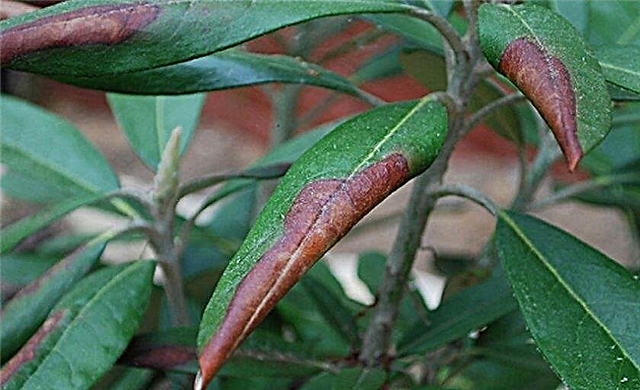
In addition to improper care, pests can cause a deterioration in azalea:
- Spider mite. The main reason for the appearance is too low humidity. The main sign that azalea is affected by this pest can be called the appearance of cobwebs on the leaves.If the plant is not too affected, it is washed under a warm shower, and then treated with either a soapy solution or garlic water. If the lesion area is large, acaricides are needed.

- Azalea Moth. The symptom of the appearance of this pest is the drying of the leaves. This specific species of moth parasitizes only on azaleas, forming cocoons on the bottom of the leaf. To get rid of this problem, you need to fumigate the plant with sulfur vapor or treat it with Rogora-S solution.

- Mealybug. The appearance of this pest is indicated by the appearance of a light waxy coating resembling cotton wool, as well as the release of a sugar-like character. The plant is treated with garlic infusion, soap or onion juice. If the plant is severely affected, or home methods did not give the expected result, you can use Intavir or Fufanon.
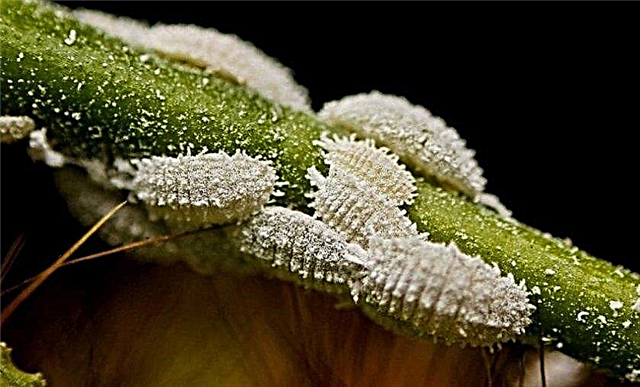
- Whiteflies These pests feed on rhododendron juice. From touching the flower, they scatter in different directions. If there are few of them, you can move the flowerpot to a cooler place and treat the bush with the infusion of garlic. An adhesive trap can also be used. With a more extensive defeat, Confidor and Fitoverm will help.

- Shield. When this pest appears on the leaf veins, brown or yellow spots appear. It is not so easy to get rid of them, because they secrete a special wax secret that protects them from the effects of chemicals. The combined method will be effective: clean the leaves mechanically, and then treat with “Aktara”.
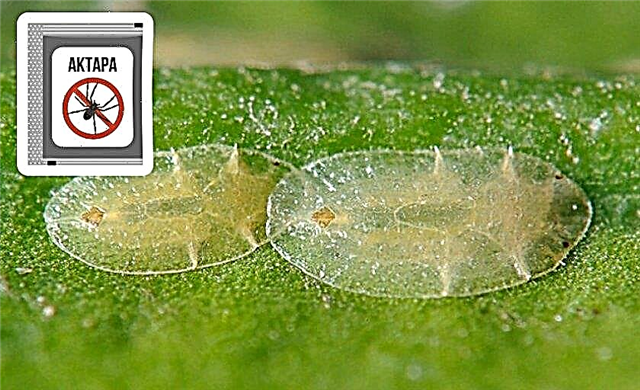
- Greenhouse thrips. This insect eats the leaves of rhododendron, as evidenced by the characteristic holes on them. Affected leaves become dull, after which they turn yellow, and then completely fall off. Negatively affects the growth and flowering of the plant. For treatment, the bush is treated with nicotine solution (0.3%) or malathion emulsion (0.2%).
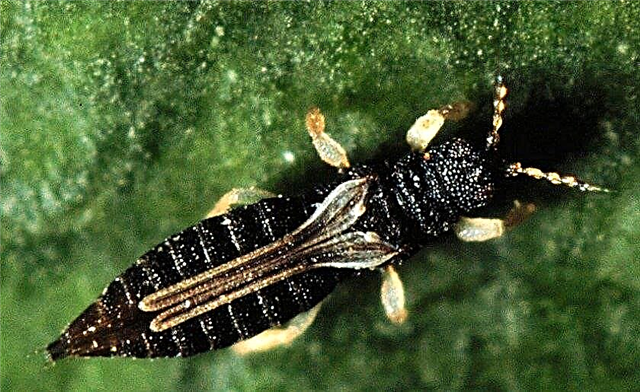
- Aphid. Colonies of this small pest most often appear in the first half of the year. Due to their vital functions, the leaves of rhododendron are twisted, the buds do not open, the plant loses its appearance and vitality. To get rid of aphids, you need to process the azalea with Actellic, Fitoverm or Karbofos.

Propagation at home
There are three ways to propagate azaleas:
- The seeds.
- Cuttings.
- By dividing the bush.
Growing seeds is a complex and lengthy process that is used only by specialist breeders to breed new varieties. At home, the most reliable and productive will be propagation by cuttings.
To do everything right, follow the step by step instructions:
- In the period from May to August, cut a semi-lignified stalk, no larger than 5-8 cm.
- Treat a fresh cut site with a root preparation.
- Prepare a small container with acidic soil (for example, sphagnum peat) and plant cuttings vertically in it, deepening the base no more than 2 cm into the substrate.
- Build a small greenhouse for the "kids". To do this, you can cover them with a jar or film so that the shelter can be easily removed if necessary for irrigation or irrigation.
- The optimum temperature for the greenhouse is + 25 ° C, and the place where the cuttings will be standing should be sunny.
- The rooting of cuttings lasts about 1 month, and maybe longer.
- When the stalk is already rooted and matured, it is planted in a pot intended for it. In this case, the elongated branches can be immediately neatly shortened.

Some gardeners have successfully practiced dividing the bush at home. For this, a plant that is already 4-5 years old is cut in half at the base and planted in two different pots. But this must be done very carefully, otherwise instead of reproduction, you can get the death of the whole plant.
Indoor rhododendron is an exotic plant with flowering of incredible beauty. This flower does not respond well to any factors unfavorable to it (heat, prolonged drought, late feeding, improper soil composition, etc.). But in practice it will be difficult only with the first plant. When you find an approach to it, you will see that the beauty and sense of comfort and celebration in the house that he gives are definitely worth the effort.













